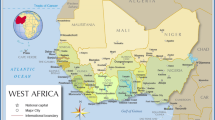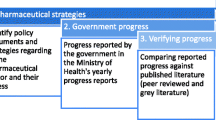Abstract
This chapter outlines the example of a regional effort to improve access to medicines through regulatory harmonization in the East African Community.
The East African Community (EAC) consists of five Partner States: Burundi, Kenya, Uganda, Rwanda, and Tanzania. The Republic of Southern Sudan was recently admitted to the EAC as the sixth Partner State on March 2, 2016. The East African Community Medicines and Health Technologies Policy is under development to complement provisions of EAC Treaty, Article 118, Chapter 21 on regional cooperation on health and EAC Common Market Protocol in which integration in the health sector is the main policy priority. An assessment of medicines’ policies and pharmaceutical legislation was undertaken in all five EAC Partner States in May–June 2015. Key findings indicated that all Partner States have medicine policies, and three Partner States with updated medicine policies. Constitutional changes are driving the policy reform with human rights principles underpinning policies. Implementation planning, together with monitoring and evaluation, are areas requiring support across the EAC. The recommendation for the regional pharmaceutical policy is to guide action in three areas, namely, access, quality, and rational use. The scope of the regional policy needs to include pharmaceuticals for human and veterinary use plus medical devices, health technologies, food, and cosmetics. All Partner States have pharmaceutical legislation in place; however, this is outdated and is in need of reform to align to the regional harmonization initiatives and allow countries to implement their policies in a timely and efficient manner. The slow pace of legislative reform is a barrier to improve access to essential medicines and health commodities across the region. In terms of the medicines’ regulatory harmonization agenda, legal frameworks for mutual recognition and information sharing are key. Considering the different stages of development across the EAC Partner States and the enablers, together with regional goals and aspirations, a phased approach to implementation of the regional policy and legislation is recommended. First, adopt a stepwise approach to regional collaboration in the pharmaceutical sector starting with implementation of national policies. Second is to establish the East African Community Medicines and Food Safety Commission. Alongside these developments, information sharing activities should increase and continue.
Access this chapter
Tax calculation will be finalised at checkout
Purchases are for personal use only
Similar content being viewed by others
Notes
- 1.
Normally vaccines, blood products, and other biologicals are considered to be within the framework of medicinal products for human use. This also true for herbal products for human use.
References
East African Community. One people one destiny. www.eac.int. Accessed 12 Jan 2016.
East African Community. (2010). EAC common market protocol. Arusha: EAC.
http://data.worldbank.org/country. Accessed 12 Jan 2016.
East African Community. (2002). The treaty for the establishment of the East African Community. Arusha: EAC.
WHO. http://www.who.int/countries. Accessed 10 Jan 2016.
EAC. http://www.eac.int/statistics. Accessed 12 Jan 2016.
WHO. http://www.who.int/gho/child_health/mortality. Accessed 12 Jan 2016.
Ministry of Health Burundi. https://www.minisante.bi. Accessed 13 Jan 2016.
Ministry of Health Kenya. www.health.go.ke. Accessed 13 Jan 2016.
Ministry of Health Rwanda. www.mog.gov.rw. Accessed 13 Jan 2016.
Ministry of Health Uganda. www.health.go.ug. Accessed 13 Jan 2016.
Ministry of Health, Community Development, Gender, Elderly and Children, United Republic of Tanzania. www.moh.go.tz. Accessed 13 Jan 2016.
East African Community. (2012). EAC regional manufacturing plan of action, 2012 – 2016. Arusha: EAC.
hera. EAC medicines policy, legal and regulatory frameworks. Report. Sept 2015.
National Drug Policy and Authority Act 1993. Chapter 206. http://www.ulii.org/ug/legislation/consolidated-act/206. Accessed 15 July 2016.
Author information
Authors and Affiliations
Corresponding author
Editor information
Editors and Affiliations
Rights and permissions
Copyright information
© 2017 Springer International Publishing AG
About this chapter
Cite this chapter
Mashingia, J., Patel, A. (2017). Pharmaceutical Policy in the East African Community: Burundi, Kenya, Uganda, Rwanda, Tanzania. In: Babar, ZUD. (eds) Pharmaceutical Policy in Countries with Developing Healthcare Systems. Adis, Cham. https://doi.org/10.1007/978-3-319-51673-8_2
Download citation
DOI: https://doi.org/10.1007/978-3-319-51673-8_2
Published:
Publisher Name: Adis, Cham
Print ISBN: 978-3-319-51672-1
Online ISBN: 978-3-319-51673-8
eBook Packages: MedicineMedicine (R0)




